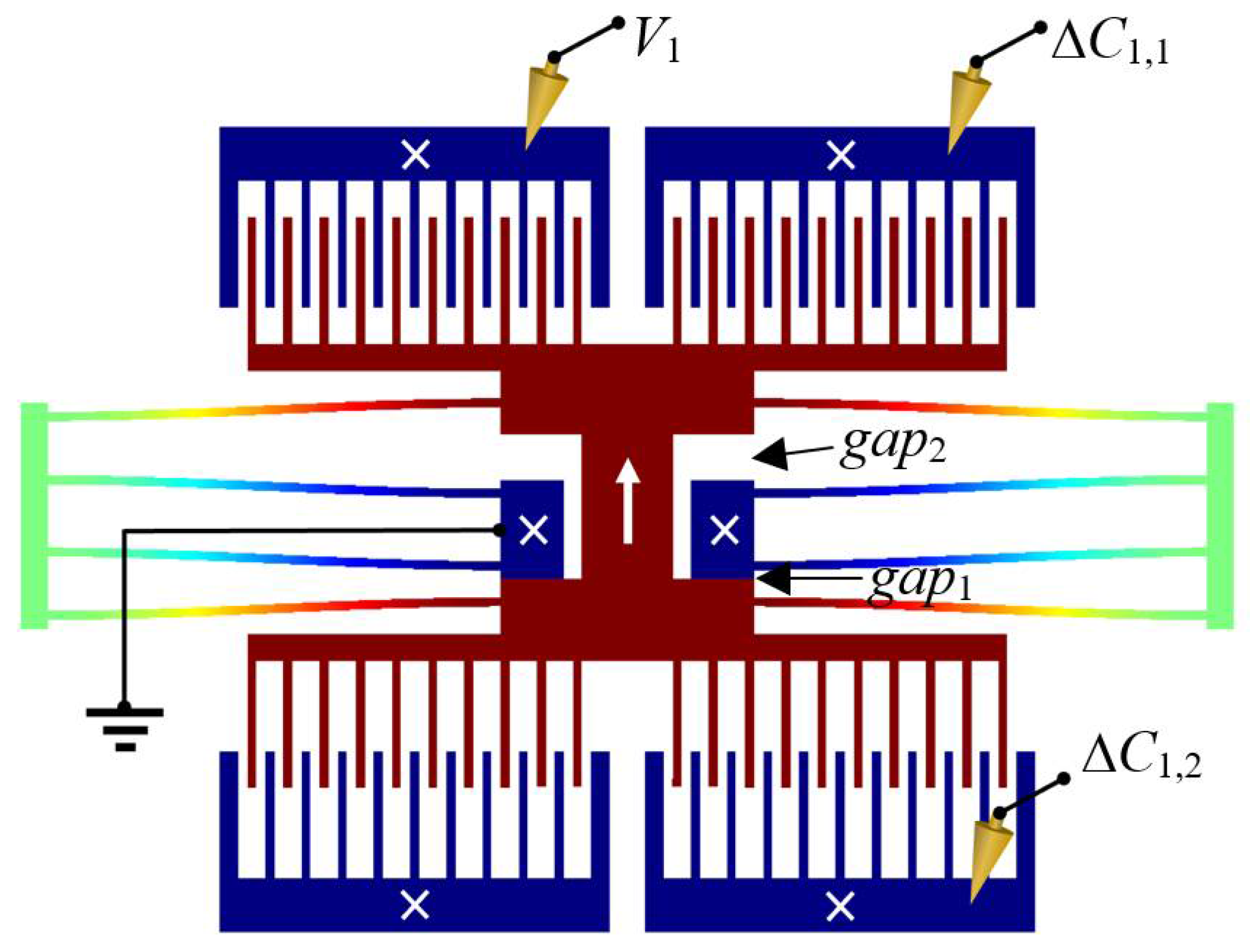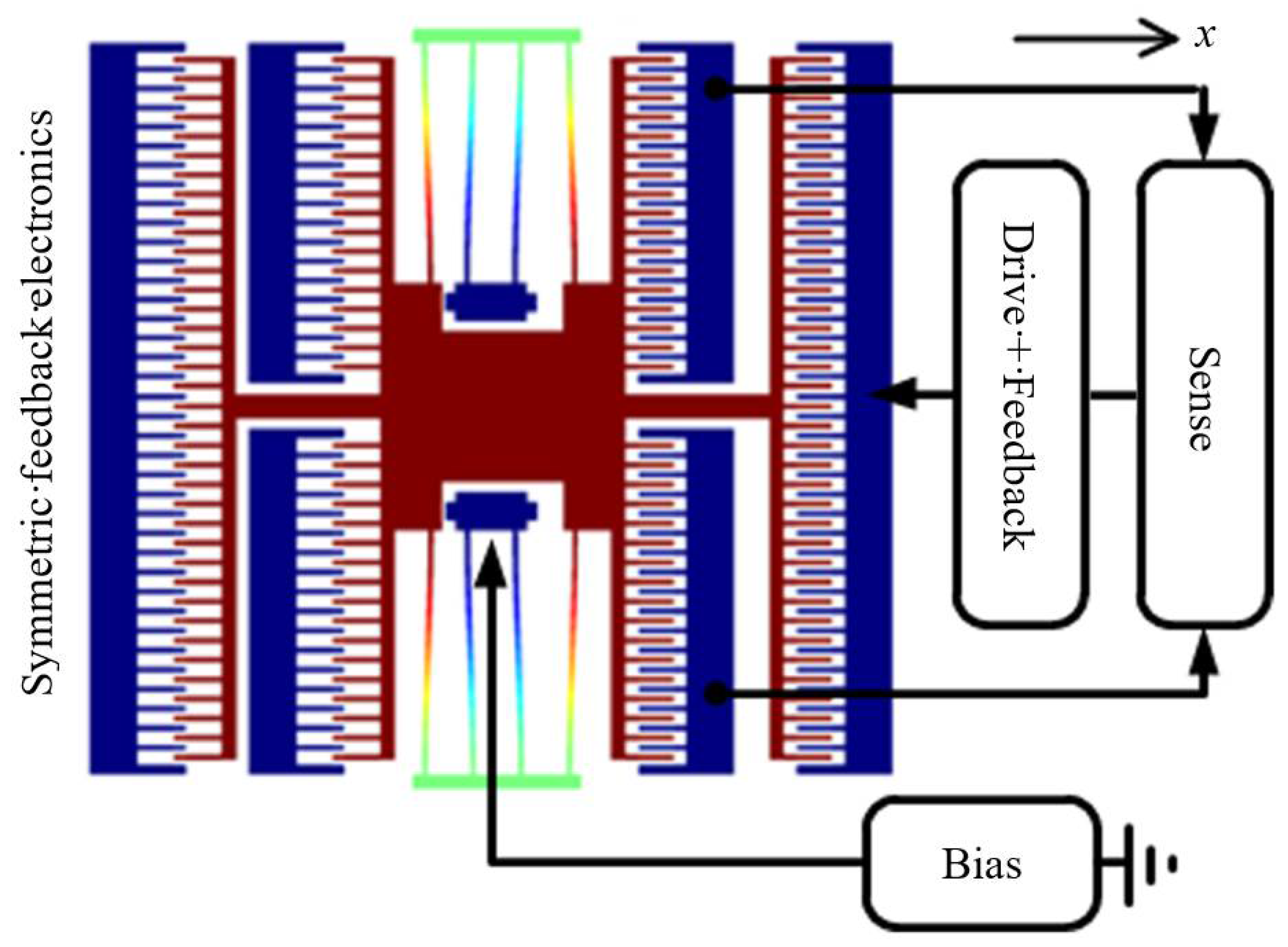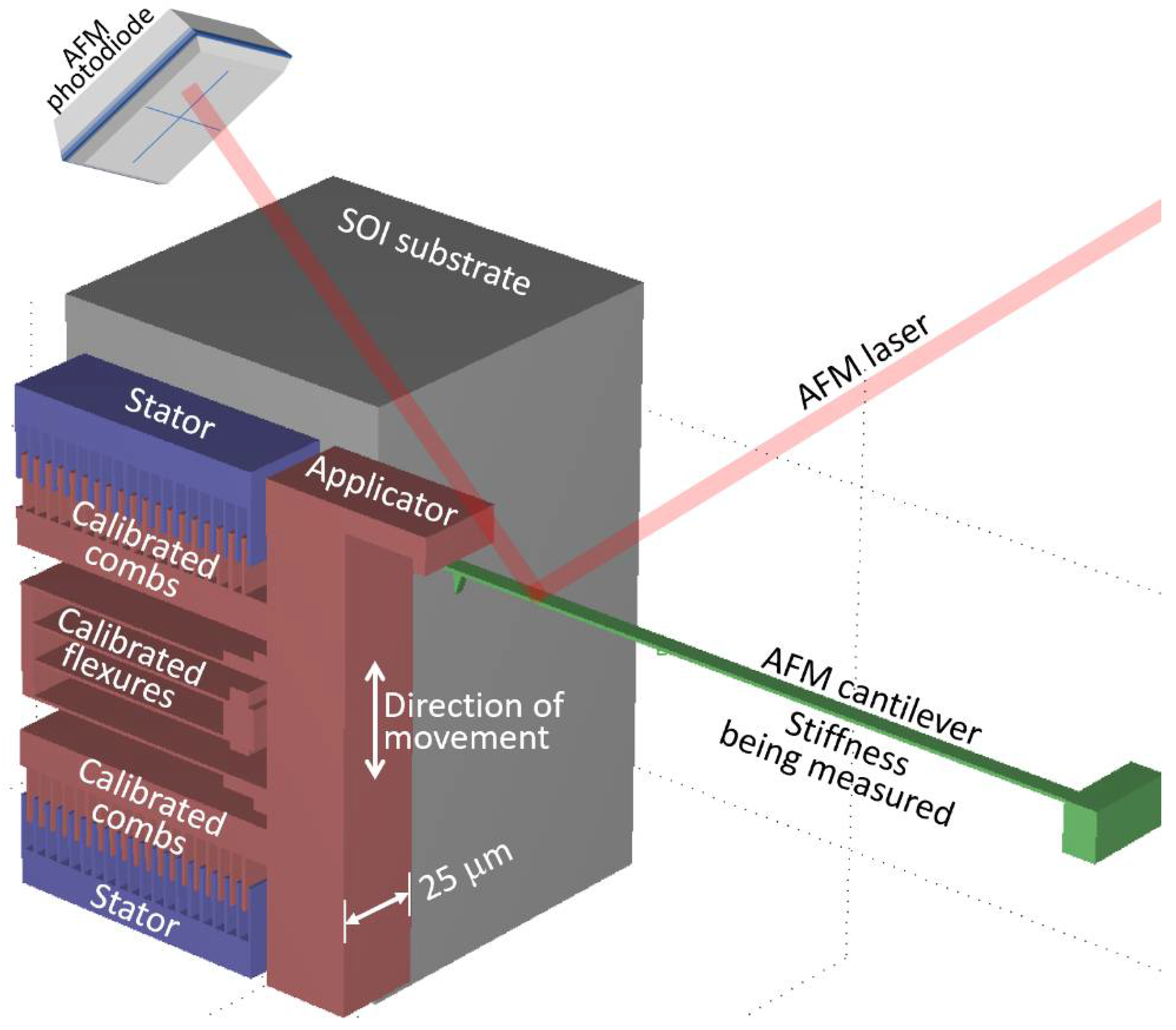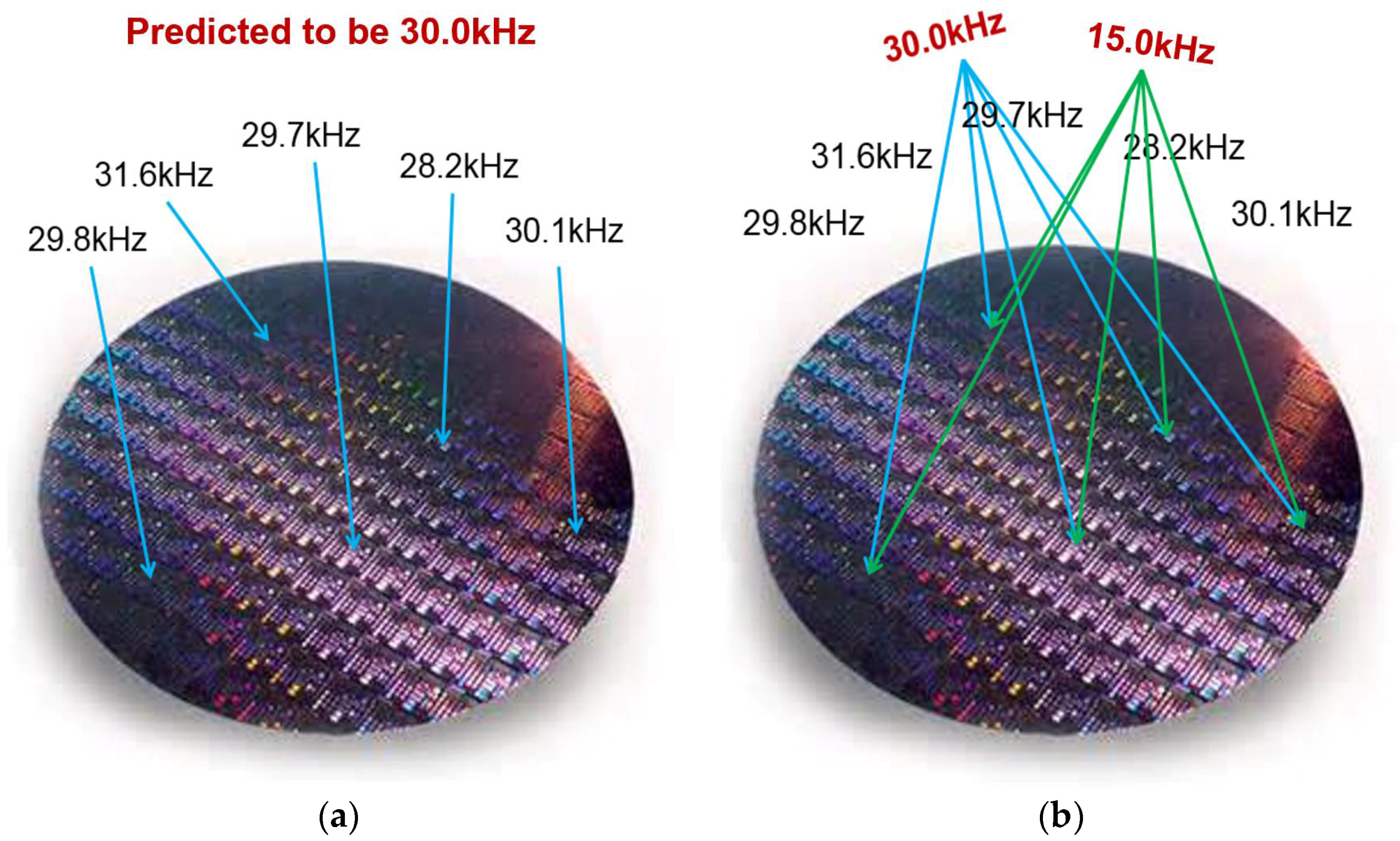Self-Calibration and Performance Control of MEMS with Applications for IoT
Abstract
:1. Introduction
2. Self-Calibration
3. Performance Control
4. Possible IoT Applications
4.1. Metrology
4.2. Performance Control
5. Conclusions
Funding
Conflicts of Interest
References
- Saha, H.N.; Saha, N.; Ghosh, R.; Roychoudhury, S. Recent trends in implementation of Internet of Things—A review. In Proceedings of the IEEE 7th Annual Information Technology, Electronics and Mobile Communication Conference (IEMCON), Vancouver, BC, Canada, 13–15 October 2016; pp. 1–6. [Google Scholar]
- Pattar, S.; Buyya, R.; Venugopal, K.R.; Iyengar, S.S.; Patnaik, L.M. Searching for the IoT Resources: Fundamentals, Requirements, Comprehensive Review and Future Directions. IEEE Commun. Surv. Tutor. 2018, 20, 2101–2132. [Google Scholar] [CrossRef]
- Want, R.; Schilit, B.N.; Jenson, S. Enabling the Internet of Things. Computer 2015, 48, 28–35. [Google Scholar] [CrossRef]
- Villanueva, L.G.; Bausells, J.; Brugger, J. Grand Challenge in N/MEMS. Front. Mech. Eng. 2016, 1. [Google Scholar] [CrossRef]
- ITRS. International Technology Roadmap for Semiconductors Micro-Electro-Mechanical Systems. 2011. Available online: http://www.itrs2.net/itrs-reports.html (accessed on 8 August 2018).
- Gaitan, M.; Tsai, R.; Robert, P. ITRS Chapter: MEMS. Future Fab International, ITRS Issue 44. January 2013. Available online: https://www.nist.gov/publications/itrs-chapter-mems (accessed on 1 October 2018).
- IRDS. International Roadmap for Devices and Systems. 2017. Available online: https://irds.ieee.org/images/files/pdf/2017/2017IRDS_ES.pdf (accessed on 1 October 2018).
- SEMI MS4-1113. Test Method for Young’s Modulus Measurements of Thin, Reflecting Films Based on the Frequency of Beams in Resonance; SEMI: Milpitas, CA, USA, 2013. [Google Scholar]
- Harvey, E.C. Laser micromachining. In Proceedings of the IEE Colloquium on Microengineering Technologies and How to Exploit Them, Birmingham, UK, 8 April 1997. [Google Scholar]
- Tanaka, K.; Mochida, Y.; Sugimoto, M.; Moriya, K.; Hasegawa, T.; Atsuchi, K.; Ohwada, K. A micromachined vibrating gyroscope. Sens. Actuators A Phys. 1995, 50, 111–115. [Google Scholar] [CrossRef]
- Joachim, D.; Lin, L. Characterization of selective polysilicon deposition for MEMS resonator tuning. J. Microelectromech. Syst. 2003, 12, 193–200. [Google Scholar] [CrossRef]
- Enderling, S.; Brown, C.L.; Balakrishnan, M.; Hedley, J.; Stevenson, J.T.M.; Bond, S.; Dunare, C.C.; Harris, A.J.; Burdess, J.S.; Mitkova, M.; et al. Integration of a novel electrochemical tuning scheme with MEMS surface micromachined resonators. In Proceedings of the 18th IEEE International Conference on Micro Electro Mechanical Systems, MEMS 2005, Miami Beach, FL, USA, 30 January–3 February 2005; pp. 159–162. [Google Scholar]
- Mehta, A.; Cherian, S.; Hedden, D.; Thundat, T. Manipulation and controlled amplification of Brownian motion of microcantilever sensors. Appl. Phys. Lett. 2001, 78, 1637–1639. [Google Scholar] [CrossRef]
- Boser, B.; Howe, R. Surface micromachined accelerometers. IEEE J. Solid-State Circuits 1996, 31, 366–375. [Google Scholar] [CrossRef]
- Lee, K.B.; Lin, L.; Cho, Y.-H. A frequency-tunable microactuator with a varied comb-width profile. In Proceedings of the 17th IEEE International Conference on Micro Electro Mechanical Systems, Maastricht, The Netherlands, 25–29 January 2004; pp. 257–260. [Google Scholar]
- Handtmann, M.; Aigner, R.; Meckes, A.; Wachutka, G.K.M. Sensitivity enhancement of MEMS inertial sensors using negative springs and active control. Sens. Actuators A Phys. 2002, 97–98, 153–160. [Google Scholar] [CrossRef]
- Liang, S.; Medich, D.; Czajkowsky, D.M.; Sheng, S.; Yuan, J.-Y.; Shao, Z. Thermal noise reduction of mechanical oscillators by actively controlled external dissipative forces. Ultramicroscopy 1999, 84, 119–125. [Google Scholar] [CrossRef]
- Moore, S.I.; Moheimani, S.O.R. Vibration control with MEMS electrostatic drives: A self-sensing approach. IEEE Trans. Control Syst. Technol. 2015, 23, 1237–1244. [Google Scholar] [CrossRef]
- Prakash, G.; Raman, A.; Rhoads, J.; Reifenberger, R.G. Parametric noise squeezing and parametric resonance of microcantilevers in air and liquid environments. Rev. Sci. Instrum. 2012, 83, 065109. [Google Scholar] [CrossRef]
- Bajaj, N.; Sabater, A.B.; Hickey, J.N.; Chiu, G.T.-C.; Rhoads, J.F. Design and implementation of a tunable, duffing-like electronic resonator via nonlinear feedback. J. Microelectromech. Syst. 2016, 25, 2–10. [Google Scholar] [CrossRef]
- Li, F.; Clark, J.V. Self-calibration for MEMS with comb drives: Measurement of gap. J. Microelectromech. Syst. 2012, 21, 1019–1021. [Google Scholar] [CrossRef]
- Li, F.; Peroulis, D.; Clark, J.V. Measuring the Planar Geometry of MEMS by Measuring Comb Drive Capacitance. J. Microelectromech. Syst. Lett. 2014, 23, 972–979. [Google Scholar] [CrossRef]
- Green, J.; Krakauer, D. New iMEMS angular rate-sensing gyroscope. Analog Dialogue 2003, 37, 1–4. [Google Scholar]
- Agilent E4980A Precision LCR Meter 20 Hz to 2 MHz. Available online: http://www.ece.ucy.ac.cy/labs/holistic_elab/facilities/brochures/E4980.pdf (accessed on 1 October 2018).
- AH2550A Ultra-precision Capacitance Bridge. Available online: http://www.andeen-hagerling.com/ah2550a.htm (accessed on 1 October 2018).
- AD7746 Capacitance-to-Digital Convertor. Available online: https://www.electronicwings.com/components/ad7746-capacitance-to-digital-converter (accessed on 1 October 2018).
- Tran, T.; Oliver, D.R.; Thomson, D.J.; Bridges, G.E. Sub-zeptofarad sensitivity scanning capacitance microscopy. In Proceedings of the IEEE Canadian Conference on Electrical and Computer Engineering, Winnipeg, MB, Canada, 12–15 May 2002; Volume 1, pp. 455–459. [Google Scholar]
- Carminati, M.; Ferrari, G.; Guagliardo, F.; Sampietro, M. ZeptoFarad capacitance detection with a miniaturized CMOS current front-end for nanoscale sensors. Sens. Actuators A 2011, 172, 117–123. [Google Scholar] [CrossRef]
- Clark, J.V.; Misiats, O.; Sayed, S. Electrical Control of Effective Mass, Damping, and Stiffness of MEMS Devices. IEEE Sens. J. 2017, 17, 1363–1372. [Google Scholar] [CrossRef]
- Hutter, J.L.; Bechhoefer, J. Calibration of Atomic-Force Microscope Tips. Rev. Sci. Instrum. 1993, 64, 1868–1873. [Google Scholar] [CrossRef]
- Conroy, M.; Armstrong, J. A comparison of surface metrology techniques. J. Phys. Conf. Ser. 2005, 13, 458–465. [Google Scholar] [CrossRef]
- Burnham, N.; Chen, X.; Hodges, C.S.; Thorseson, E.J.; Roberts, C.J.; Davies, M.C.; Tendler, S.J.B. Comparison of Calibration Methods for AFM Cantilevers. Nanotechnology 2003, 14, 1–6. [Google Scholar] [CrossRef]
- Sader, J.E.; Larson, I.; Mulvaney, P.; White, L.R. Method for the Calibration of Atomic Force Microscope Cantilevers. Rev. Sci. Instrum. 1995, 66, 3789–3798. [Google Scholar] [CrossRef]
- Portoles, J.F.; Cumpson, P.J. A Compact Torsional Reference Device for AFM Calibration Easy, Accurate and Traceable AFM Piconewton Calibration. Nanotechnology 2013, 24. [Google Scholar] [CrossRef]
- Arlett, J.L.; Myers, E.B.; Roukes, M.L. Comparative Advantages of Mechanical Biosensors. Nat. Nanotechnol. 2011, 6, 203–215. [Google Scholar] [CrossRef]
- Johnson, B.N.; Mutharasan, R. Biosensing using dynamic-mode cantilever sensors: A review. Biosens. Bioelectron. 2012, 32, 1–18. [Google Scholar] [CrossRef]
- Zhang, L.M.; Uttamchandani, D.; Culshaw, B. Measurement of the Mechanical Properties of Silicon Resonators. Sens. Actuators A Phys. 1991, 29, 79–84. [Google Scholar] [CrossRef]
- Park, K.; Kim, N.; Morisette, D.T.; Aluru, N.R.; Bashir, R. Resonant MEMS Mass Sensors for Measurement of Microdroplet Evaporation. J. Microelectromech. Syst. 2012, 21, 702–711. [Google Scholar] [CrossRef]
- Bouchaala1, A.; Nayfeh, A.H.; Jaber, N.; Younis, M.I. Mass and position determination in MEMS mass sensors: A theoretical and an experimental investigation. J. Micromech. Microeng. 2016, 26, 105009. [Google Scholar] [CrossRef]
- Hadji1, C.; Berthet, C.; Baléras, F.; Cochet, M.; Icard, B.; Agache, V. Hollow MEMS Mass Sensor for Real-time Particles Weighing and Sizing from a few 1-nm to um scale. In Proceedings of the IEEE International Conference on Micro Electro Mechanical Systems (MEMS), Estoril, Portugal, 18–22 January 2015; pp. 180–183. [Google Scholar]
- Middlemiss, R.P.; Samarelli, A.; Paul, D.J.; Hough, J.; Rowan, S.; Hammond, G.D. Measurement of the Earth tides with a MEMS gravimeter. Nature 2016, 531, 614–617. [Google Scholar] [CrossRef] [Green Version]
- Suzuki, T.; Nishi, K.; Saeki, M.; Morikawa, H. Accuracy verification of attitude measurement system using L1 GPS and MEMES IMU. Butsuri-Tansa 2014, 67, 171–179. [Google Scholar] [CrossRef]
- Maniraman, P.; Chitra, L. Comparative analysis of capacitive type MEMS pressure sensor for altitude sensing. In Proceedings of the 2014 IEEE National Conference on Emerging Trends in New & Renewable Energy Sources and Energy Management, Chennai, India, 16–17 December 2014; pp. 195–199. [Google Scholar]
- Kholopov, I.S. Development of strapdown inertial navigation system with mems sensors, barometric altimeter and ultrasonic range meter. IOP Conf. Ser. Mater. Sci. Eng. 2015, 93, 012060. [Google Scholar] [CrossRef]
- Aydemir, A.G.; Saranlı, A. Characterization and calibration of MEMS inertial sensors for state and parameter estimation applications. Measurement 2012, 45, 1210–1225. [Google Scholar] [CrossRef]
- Ren, T.-L.; Hao, C.; Yang, Y.; Zhu, Y.-P.; Fu, D.; Wang, C.; Wu, X.-M.; Cai, J.; Liu, L.-T.; Li, Z.-J. Micromachined piezoelectric acoustic device. In Proceedings of the International Workshop on Electron Devices and Semiconductor Technology, Mumbai, India, 1–2 June 2009; pp. 1–6. [Google Scholar]
- Guo, Y.; Schutz, S.; Vaghi, A.; Li, Y.-H.; Guo, Z.; Chang, F.-K.; Barrettino, D.; Wang, S.X. Stand-Alone Stretchable Absolute Pressure Sensing System for Industrial Applications. IEEE Trans. Ind. Electron. 2017, 64, 8739–8746. [Google Scholar] [CrossRef]
- Banerji, S.; Fernández, D.; Madrenas, J. Characterization of CMOS-MEMS Resonant Pressure Sensors. IEEE Sens. J. 2017, 17, 6653–6661. [Google Scholar] [CrossRef]
- Osterberg, P.M.; Senturia, S.D. M-TEST: A test chip for MEMS material property measurement using electrostatically actuated test structures. J. Microelectromech. Syst. 1997, 6, 107–118. [Google Scholar] [CrossRef] [Green Version]
- Gupta, R.K. Electronically probed measurements of MEMS geometries. J. Microelectromech. Syst. 2000, 9, 380–389. [Google Scholar] [CrossRef] [Green Version]
- Manut, A.; Zoolfakar, A.S.; Kharuddin, K.N.M.; Zolkapli, M.; Aziz, A.A. Design of MEMS Gyroscope for Wide Range Resonance Frequency Adjustment. In Proceedings of the 2010 IEEE International Conference on Semiconductor Electronics (ICSE2010), Melaka, Malaysia, 28–30 June 2010. [Google Scholar]
- Wang, C.; Yu, H.-H.; Tsou, C.; Fang, W. Application of phase locking loop control for mems resonant devices. In Proceedings of the IEEE/LEOS International Conference on Optical MEMS and Their Applications Conference, Oulu, Finland, 1–4 August 2005; pp. 165–166. [Google Scholar]
- Kharrat, C.; Colinet, E.; Voda, A. H∞ Loop shaping control for PLL-based mechanical resonance tracking in NEMS resonant mass sensors. In Proceedings of the IEEE Sensors 2008 Conference, Lecce, Italy, 26–29 October 2008; pp. 1135–1138. [Google Scholar]
- Prikhodko, I.; Nadig, S.; Gregory, J.; Clark, W.; Judy, M. Half-a-month stable 0.2 degree-per-hour mode-matched MEMS gyroscope. In Proceedings of the IEEE International Symposium on Inertial Sensors and Systems (INERTIAL), Kauai, HI, USA, 27–30 March 2017; pp. 1–4. [Google Scholar]






| Force | Tangible Phenomena | Conventional Tools | ||
|---|---|---|---|---|
| 1 N | Weight of Newton’s apple |  | ||
| 10−1 N | Translational force on a pitcher’s curveball | |||
| 10−2 N | Width of 1 cm3 of water |  | ||
| 10−3 N | Particulates in 1 m3 of urban air | |||
| 10−4 N | Indentations |  | ||
| 10−5 N | Surface tension per centimeter of water | |||
| 10−6 N | Solar radiation/m2 near earth | |||
| 10−7 N | Exact force/length of a pair of 1 ampere wires 2 m apart | |||
| 10−8 N | Weight of a dust mite, or hydrogen/liter of water pH7 | |||
| 10−9 N | Covalent bond | |||
| 10−10 N | Noncovalent bond, or DNA rupture |  | ||
| 10−11 N | Gravitational force between two 1 kg masses 1 m apart |  | ||
| 10−12 N | Light pressure of a 1 mW laser pointer, or protein folding | |||
| 10−13 N | Casimir force/μm2 on parallel plates 1 μm apart | |||
| 10−14 N | Weight of bacterium, or force of its Brownian motion | |||
| 10−15 N | Resolution of optical tweezers | |||
| 10−16 N | Force between a pair of electrons 15 μm apart | |||
| 10−17 N | Resolution of magnetic force resonance force microscopy | |||
| 10−18 N | Unpaired electron spins | |||
© 2018 by the author. Licensee MDPI, Basel, Switzerland. This article is an open access article distributed under the terms and conditions of the Creative Commons Attribution (CC BY) license (http://creativecommons.org/licenses/by/4.0/).
Share and Cite
Clark, J. Self-Calibration and Performance Control of MEMS with Applications for IoT. Sensors 2018, 18, 4411. https://doi.org/10.3390/s18124411
Clark J. Self-Calibration and Performance Control of MEMS with Applications for IoT. Sensors. 2018; 18(12):4411. https://doi.org/10.3390/s18124411
Chicago/Turabian StyleClark, Jason. 2018. "Self-Calibration and Performance Control of MEMS with Applications for IoT" Sensors 18, no. 12: 4411. https://doi.org/10.3390/s18124411
APA StyleClark, J. (2018). Self-Calibration and Performance Control of MEMS with Applications for IoT. Sensors, 18(12), 4411. https://doi.org/10.3390/s18124411




